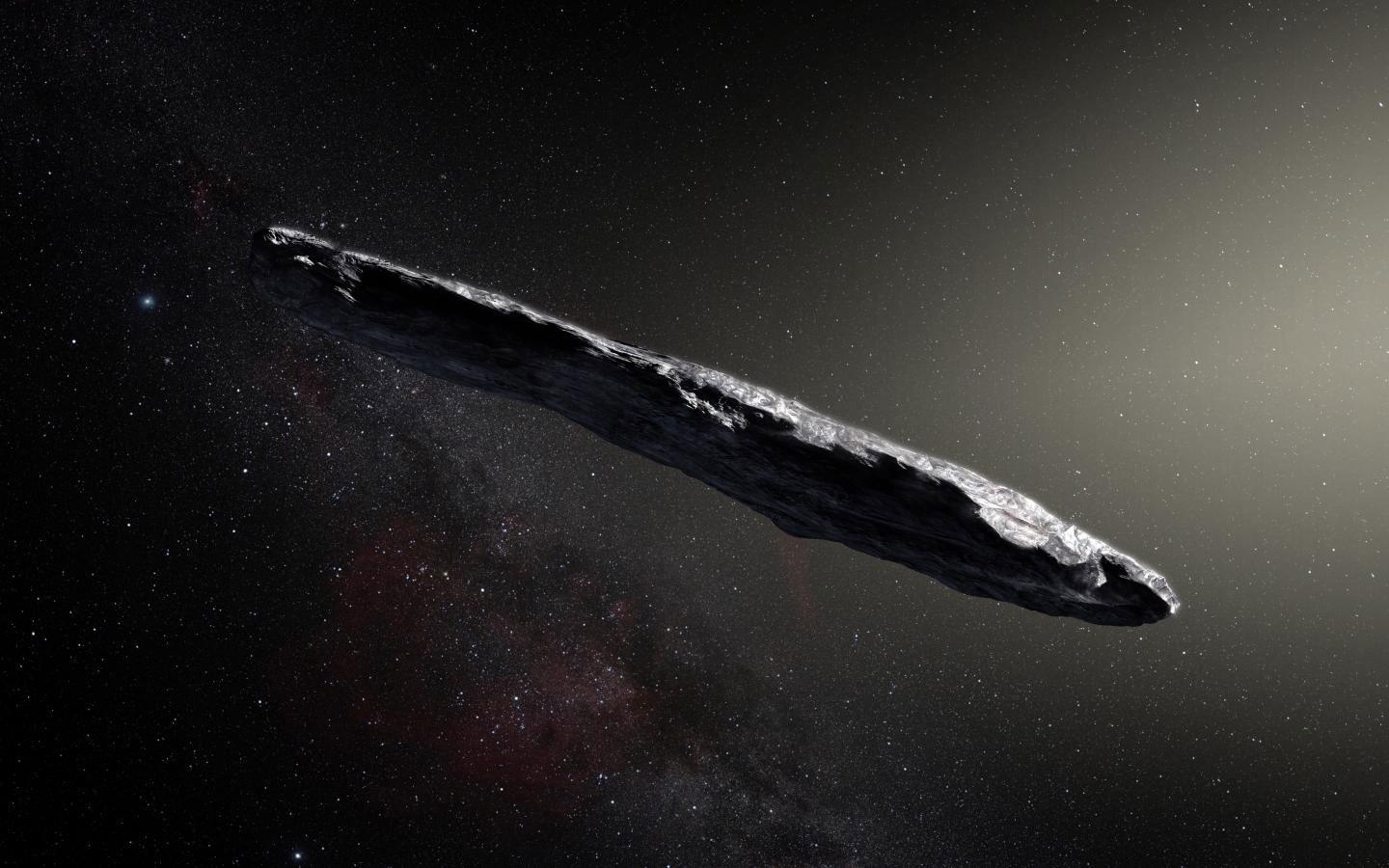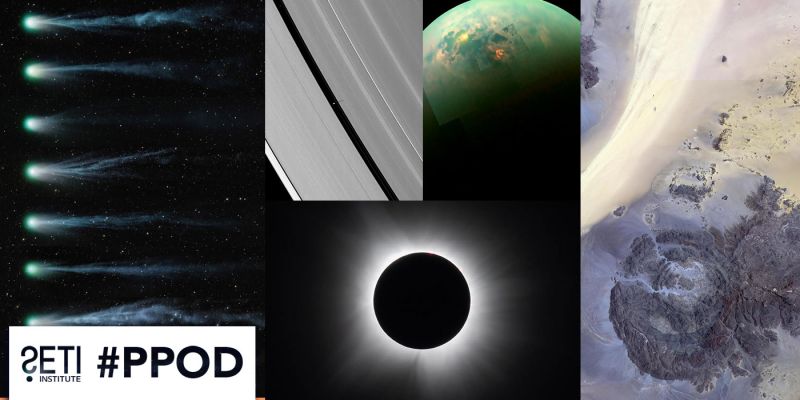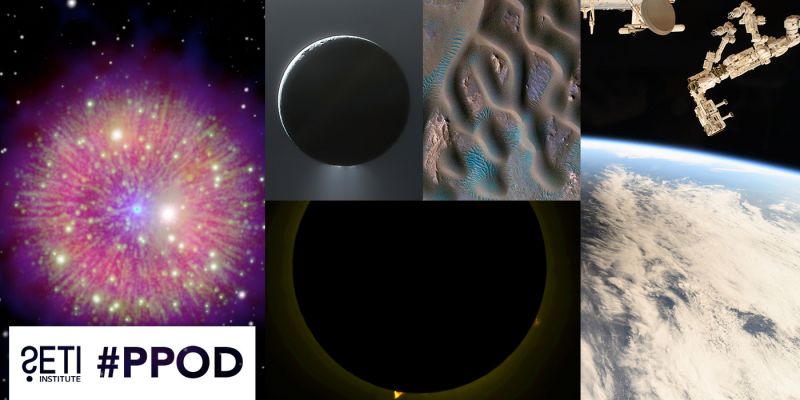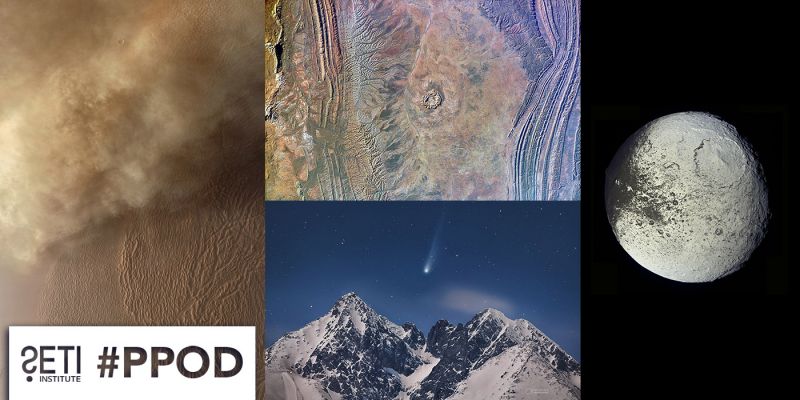In 2017, we discovered the first astronomical object to enter the Solar System from interstellar space. ‘Oumuamua (Hawaiian for “scout”) was discovered by the Pan-STARRS survey team in Hawaii on October 19th.

One of the defining moments in planetary astronomy in 2017 is that this is the year we discovered the first astronomical object to enter the Solar System from interstellar space. Now known as ‘Oumuamua (Hawaiian for “scout”), the object was discovered by the Pan-STARRS survey team in Hawaii on October 19th. Over the next three weeks it was in turn classified as a comet, a long-period asteroid and finally, the first of the new class of interstellar objects.
As soon as `Oumuamua's true trajectory was confirmed, all available telescopes were used to study it as quickly as possible because it was moving away from Earth at a very high rate of speed. `Oumuamua was actually discovered already on its way out of our solar system, after it passed Earth and could finally be seen in the nighttime sky (when it was on the same side as the sun, it wasn’t visible). Now (late January 2018), `Oumuamua is too faint to see even through the largest telescopes, but its brief passage has given us some rare firsthand information on a distant solar system, and also left us with three surprises.
Before discussing the surprising aspects of `Oumuamua, here are some of the less unexpected facts of `Oumuamua:
It wasn't moving very fast relative to nearby stars – in fact, it was the Solar System that ran into `Oumuamua, rather than the other way around. This means that the star `Oumuamua originated from orbits the galaxy on an orderly orbit in the galactic disk, like most other local stars.
`Oumuamua is faint and small. We are not sure how small exactly as we don't know how reflective its surface is, but it's definitely less than a kilometer long.
Another unremarkable quality of `Oumuamua is its color, which is somewhat red and therefore very similar to that of some of our own comets and distant asteroids.
The first surprise of `Oumuamua is that it is not a comet. `Oumuamua was initially classified as a comet not because of having coma, or a tail (it has neither), but because we expected interstellar objects to be comets. Our giant planets have ejected many, many comets (and many fewer asteroids) into interstellar space during Solar System's formation. We know this because some of them were not quite lost, but were "stuck" in the Oort cloud, a giant swarm of comets orbiting the Sun at very large distances. Combined with the fact that comets are easier to see than asteroids for the same size of the nucleus (comets were known in antiquity and asteroids were discovered only in the 19th century), we expected the first interstellar visitor to be a comet, but we were wrong.
The second surprise of `Oumuamua is how elongated it is. `Oumuamua's changes in brightness over time imply that it is roughly cigar-shaped, with an axis ratio of 5:1 to 10:1. This is very extreme among asteroids in the Solar System, and would certainly not be expected if we randomly select one body from over hundred thousand known asteroids. If `Oumaumua's shape is typical of the population it comes from, things must be very different in its parent system from how they are here.
The third surprise was the fact that `Oumuamua is tumbling. At first it was noted that 'Oumuamua had a 7 or 8-hour spin period, but different measurements did not quite agree. It turned out that `Oumuamua's spin is not regular, but it executes a complex tumbling motion that shows different views of the body at different times. Some asteroids in our Solar System do tumble, but vast majority do not. We think that this is because internal motions of material inside asteroids (which are often just piles of rocks and sand loosely held together by gravity) damp this tumbling relatively quickly (astronomically speaking), leaving only asteroids that suffered recent collisions as tumblers. `Oumuamua spent many millions of years in the interstellar void, so it should have damped its tumbling, but it apparently did not. This made planetary scientists conclude that `Oumuamua is likely a solid chunk of rock or metal, without any internal structure or lose material.
So why is `Oumuamua the way it is? We do not know, but we do have some ideas. My own favorite hypothesis is that `Oumuamua is a piece of a planet destroyed by tides as it was passing close to a red dwarf star in a binary system. The idea is that the planet formed around the red dwarf's companion, but its orbit was destabilized and the planet swung past the red dwarf, about to be hurled into interstellar space. Red dwarf stars can be surprisingly dense, some of them are the size of Jupiter, but with a hundred times larger mass. This makes their tides very strong, and tides can disrupt bodies that come too close (like Jupiter disrupted comet Shoemaker-Levy 9 in 1994). If a planet can be shredded into trillions of fragments which are then ejected into interstellar space, such catastrophic events could produce more interstellar objects than regular ejections of comets and asteroids by planets.
So, what do we do now? Well, we wait for more interstellar objects to see what they are like, and we probably won't have to wait too long. A new telescope, the Large Synoptic Survey Telescope (LSST) is under construction in Chile, and it should become operational in 2022. LSST will be a robotic telescope that will take a complete scan of the whole sky down to very faint objects every three days, so it will very literally catch anything that moves. If `Oumuamua is not a complete fluke, LSST should detect about one such object every year.
`Oumuamua is the first and almost certainly won't be the last interstellar visitor we have discovered. And we are anxiously awaiting the next visitor.





